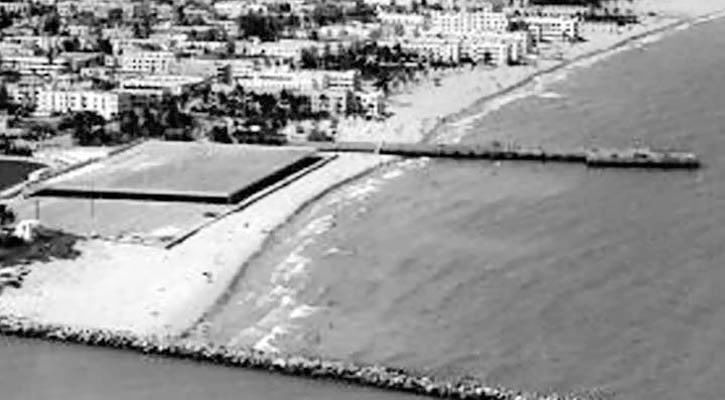The characters in The Skinny Years are composites of friends, enemies, neighbors and schoolmates from my adolescence. A few real-life experiences of my own are woven into the story as well. (However, I am not the main character, Skinny, as anyone who knows my personal history can attest.) The result is a mashup of the real and the imagined, from the past and from the present, concocted into a narrative that's hopefully interesting. In other words, it's fiction. But a lot about the era and the area in the novel are very real.
 |
| Miami's skyline in the sixties |
South Beach was once a backwater appendix to Miami Beach dubbed "God's waiting room" because of its many retirees lingering near death. It was also a surfing hangout for local teens. Today, as everyone knows, South Beach is a hip and vibrant district for the hard body set.
Below is a view of South Beach as I remember it back in the day. The stretch of coast between the pier and the jetties are the setting for several scenes in the book.
 |
| The original "South Beach" of the 1960s |
 |
| Wynwood today |
The sixties were a turbulent time. Anyone who lived through the era will remember some of its most vivid milestones: the Cuban Missile Crisis... the Civil Rights movement... the dawning of the youth counterculture... In Miami, these events were especially intense. The Skinny Years offers an intimate, Latin-flavored perspective into this social history.
If you have specific questions about the novel, its characters and events, please contact me directly. I will answer you privately to avoid spoilers for those who have not read the book.
I look forward to hearing from you.
You can find more about The Skinny Years here.
Raul Ramos y Sanchez

No comments:
Post a Comment